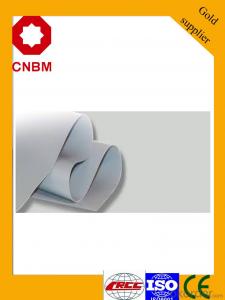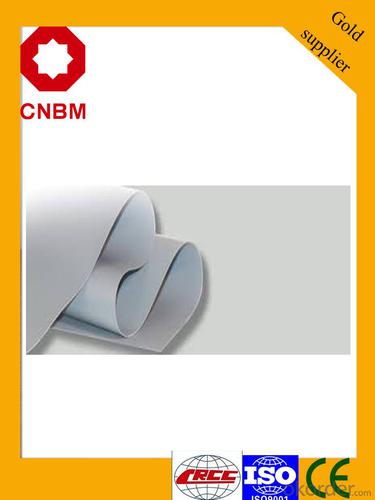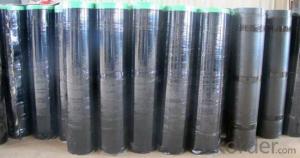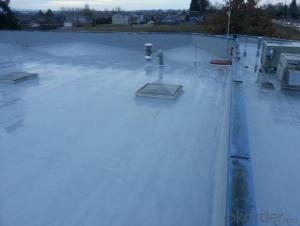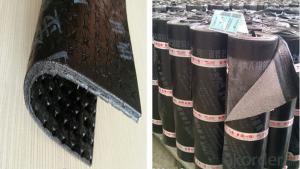Root Puncturing Resisted SBS Modified Bituminous Waterproofing Membrane
- Loading Port:
- Shanghai
- Payment Terms:
- TT OR LC
- Min Order Qty:
- 44 roll
- Supply Capability:
- 100000 roll/month
OKorder Service Pledge
OKorder Financial Service
You Might Also Like
Product description
SBS modified bitumen waterproof membranes use high quality needle punched polyester mat or fiberglass compound mat as the base reinforcement. And use SBS modified bitumen as the dip-coat material. The SBS modified bitumen waterproof membrane are widely used for roof waterproof projects.
Main performance
1.Good low temperature performance, especially suitable for cold regions.
2.Good weather resistance, tensile property, extensibility, corrosion resistance and so on.
3.Strong adaptability for substrate shrinkage, deformation and cracks.
4.Convenient to apply: use heat fusion method in all seasons.
5. Meet national standards.
6.ISO Certification.
Technical Parameters
No. |
Item | Index | |||||||||
Ⅰ | Ⅱ | ||||||||||
PY | G | PY | G | PYG | |||||||
1 |
soluble content(g/m2) ≥ | 3mm | 2100 | — | |||||||
4mm | 2900 | — | |||||||||
5mm | 3500 | ||||||||||
test phenomenon | — | non-ignitable | — | non-ignitable | — | ||||||
2 |
heat resistance | °C | 90 | 105 | |||||||
≤mm | 2 | ||||||||||
test phenomenon | no flow or drippage | ||||||||||
3
|
low temperature flexibility °C | -20 | -25 | ||||||||
no flaw | |||||||||||
4
|
water tightness 30min
|
0.3Mpa |
0.2Mpa |
0.3Mpa
| |||||||
5 |
tension | tension of maximum peak rate%≥ | 500 | 350 | 800 | 500 | 900 | ||||
tension of maximum peak rate%≥ | — | — | — | — | — | ||||||
test phenomenon | no cracks or separate | ||||||||||
6 |
elongation
| elongation of maximum peak rate%≥ |
30 |
— |
40 |
— | |||||
elongation of second peak rate%≥peak rate%≥ |
— |
— |
15 | ||||||||
Product usage
The waterproof , dampproof and seepage-proofing of roof, basement, tunnel and so on.
Packaging and storage
1)Avoid insolating, raining; the temperature shall be 4-45°C;
2)Keep them stand up and vertical;
3)Do not stack up over two tiers, avoid tilting and lateral drift.
product show
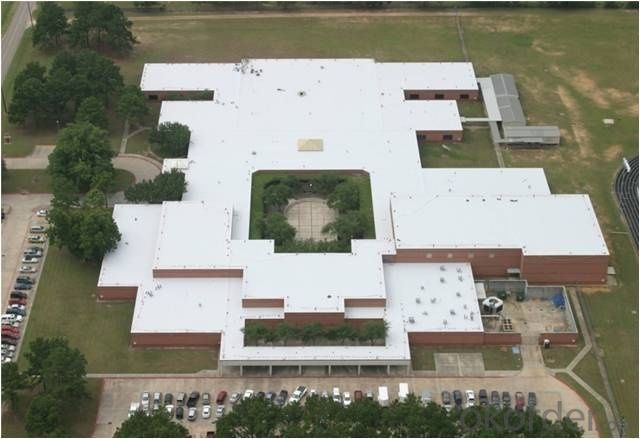
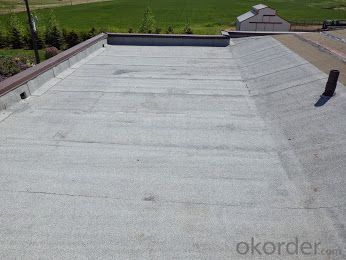
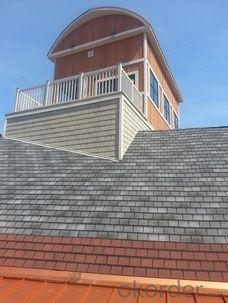
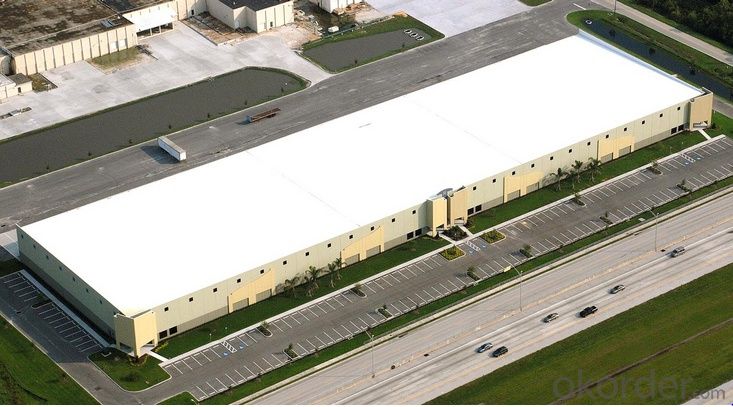
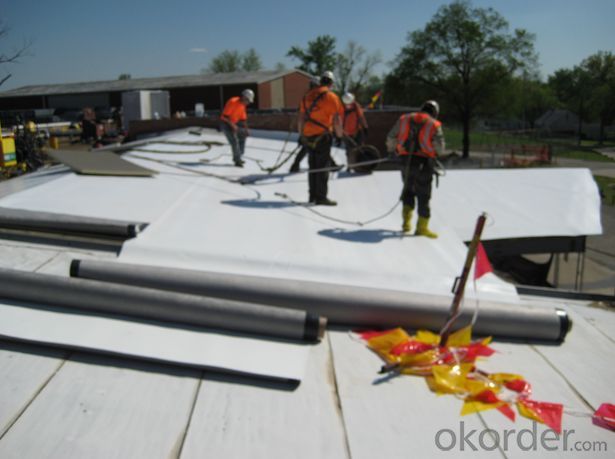
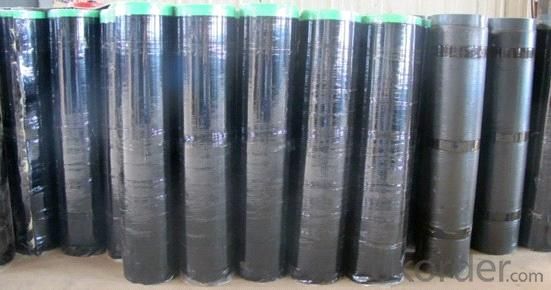
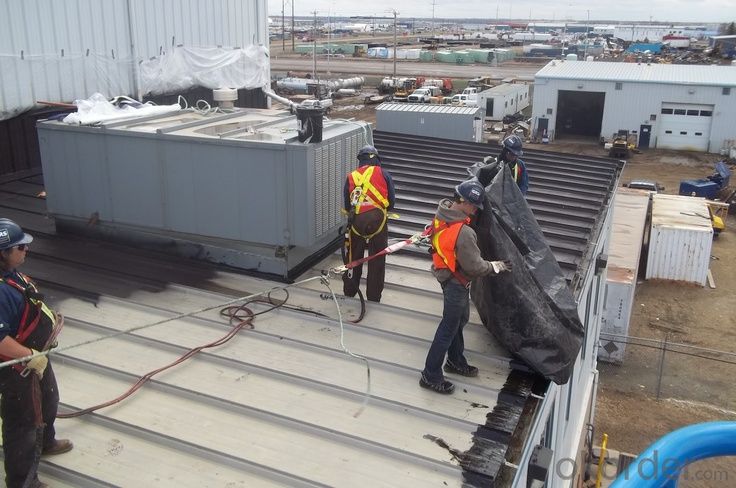
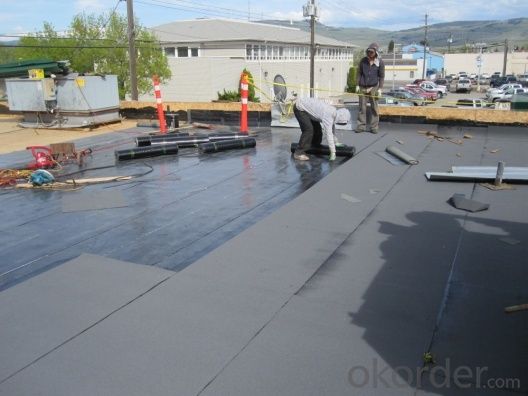
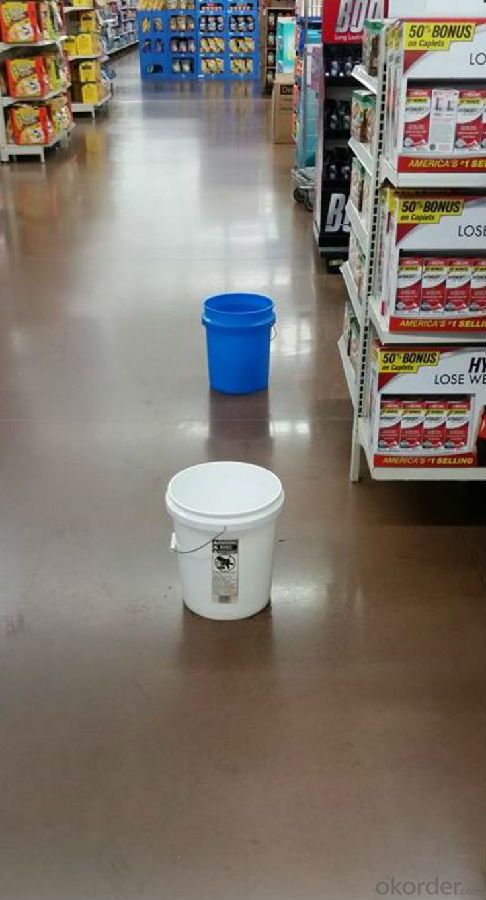
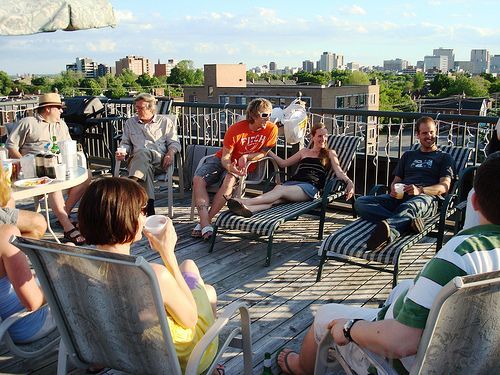
FAQ
Q: What's the delivery time ?
A: 3-5 days for 1-600 rolls, 10-15 days for container.
Q: What's the payment terms ?
A: TT/LC
Q: How do you make replacement with quality problems ?
A: New replacement will be packed into your next order or send to you directly after receive video or photo about quality problems.
- Q: Can a waterproofing membrane be used for bridges?
- Bridges can benefit from the use of a waterproofing membrane. Due to their exposure to harsh weather conditions and constant contact with water, bridges are susceptible to deterioration and structural harm. By applying a waterproofing membrane to the bridge surface, it becomes shielded against water infiltration, preventing the corroding of reinforcing steel and extending the bridge's lifespan. Acting as a barrier, the membrane prevents water from permeating the concrete and causing structural damage. Moreover, it aids in minimizing the negative impact of freeze-thaw cycles, which can further harm the bridge. Furthermore, the waterproofing membrane can enhance the overall durability and performance of the bridge, ultimately reducing maintenance and repair expenses in the long term.
- Q: SBs waterproof cold sticky how to do?
- 5, protective layer construction. In order to shield or reflect the sun's radiation, to extend the life of the waterproof layer of the membrane, in the waterproof layer is completed and checked after passing, should be coated on the surface of the waterproof layer of adhesive, side of the expansion of the expansion of silica powder protective layer, or uniform Brush the silver or green paint as a protective layer.
- Q: SBS waterproofing membrane how to sample
- PVC (PVC) waterproofing membrane, chlorinated polyethylene waterproofing membrane: the same manufacturers, specifications are not more than 5000m2 for a group, take any volume, at a distance of 300mm from the end of about 3m as a sample.
- Q: Can a waterproofing membrane be used for water fountains or decorative features?
- Yes, a waterproofing membrane can be used for water fountains or decorative features. It is designed to prevent water leakage and protect surfaces from water damage, making it an ideal choice for these applications.
- Q: Can a waterproofing membrane be used in kitchens?
- Yes, a waterproofing membrane can be used in kitchens. In fact, it is highly recommended to use waterproofing membranes in areas prone to moisture and water exposure, such as kitchens. These membranes are designed to create a barrier against water and prevent it from seeping into the underlying structure, protecting it from damage. They are commonly used on floors, walls, and even countertops to ensure a watertight seal and prevent water damage, mold growth, and other issues. Additionally, waterproofing membranes can also help with soundproofing and provide added durability and longevity to the kitchen surfaces.
- Q: Can a waterproofing membrane be used on TPO roofs?
- TPO roofs, known for their durability and energy efficiency, can still experience leaks and water damage over time. To address this, a waterproofing membrane can be applied to enhance the waterproofing capabilities of a TPO roof. A waterproofing membrane is a thin layer of material that prevents water infiltration. It is typically made from synthetic materials like modified bitumen, EPDM, or PVC. These membranes effectively create a barrier against water, protecting the underlying roof structure from leaks and potential damage. When applying a waterproofing membrane on a TPO roof, it is crucial to ensure compatibility between the materials. The membrane must be specifically designed for TPO roofs and approved by the TPO roofing system manufacturer. This ensures compatibility and avoids adverse reactions or voided warranties. Installing a waterproofing membrane on a TPO roof involves surface cleaning and preparation, applying primer if needed, and adhering the membrane using an appropriate adhesive or heat welding method. Once installed, the membrane acts as an additional protective layer, preventing water from penetrating the TPO roof system and causing damage. In conclusion, a waterproofing membrane can be utilized on TPO roofs to enhance waterproofing and safeguard against leaks. However, it is vital to select a membrane designed for TPO roofs and approved by the manufacturer. Proper installation and regular maintenance are essential to maximize the longevity and effectiveness of the waterproofing membrane on a TPO roof.
- Q: Can a waterproofing membrane be used in hospitals or healthcare facilities?
- Yes, a waterproofing membrane can be used in hospitals or healthcare facilities. It is often used in areas that require protection against moisture, such as bathrooms, operating rooms, and laboratories, to prevent water damage and maintain a hygienic environment.
- Q: Can waterproofing membranes be painted over?
- Painting over a waterproofing membrane is indeed possible. Nevertheless, it is crucial to verify the compatibility between the paint and the membrane material. It is advisable to refer to the manufacturer's guidelines or seek expert advice in order to guarantee the paint adheres well and lasts long. Furthermore, prior to applying the paint, the surface must be clean and dry to achieve optimal outcomes. All in all, painting over a waterproofing membrane can improve its aesthetic and offer extra safeguard against UV rays and other environmental elements.
- Q: Does a waterproofing membrane require any specific preparation of the substrate before installation?
- Preparation of the substrate is essential for the installation of a waterproofing membrane. Before applying the membrane, the surface on which it will be placed must be thoroughly cleaned, dried, and devoid of any contaminants or debris that could impede its adhesion. This process typically entails the removal of loose materials, such as old paint or sealants, and the leveling of any uneven surfaces. Furthermore, it may be necessary to repair any cracks or damage in the substrate to guarantee a proper and efficient installation of the waterproofing membrane. By following the recommended preparatory procedures, one can ensure that the membrane performs optimally and exhibits remarkable durability, effectively safeguarding the underlying structure against water infiltration.
- Q: Can a waterproofing membrane be used for below-grade parking garages?
- Yes, a waterproofing membrane can be used for below-grade parking garages. Waterproofing membranes are commonly used in construction projects to prevent the ingress of water into the structure. In below-grade parking garages, where the structure is below ground level, the risk of water infiltration is higher. Therefore, using a waterproofing membrane is an effective solution to protect the parking garage from water damage and ensure its durability.
Send your message to us
Root Puncturing Resisted SBS Modified Bituminous Waterproofing Membrane
- Loading Port:
- Shanghai
- Payment Terms:
- TT OR LC
- Min Order Qty:
- 44 roll
- Supply Capability:
- 100000 roll/month
OKorder Service Pledge
OKorder Financial Service
Similar products
Hot products
Hot Searches
Related keywords
